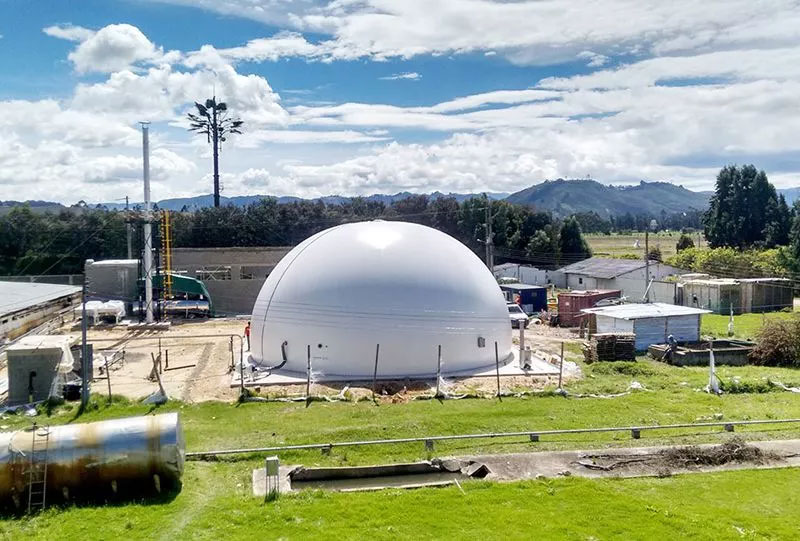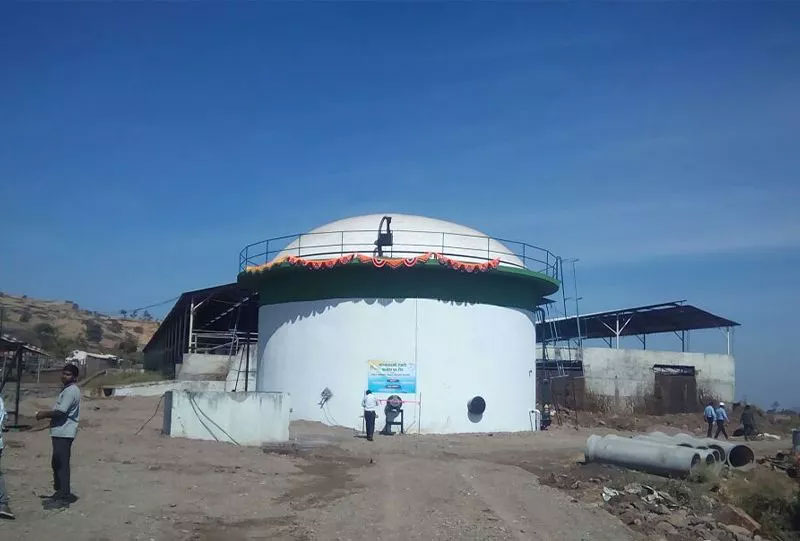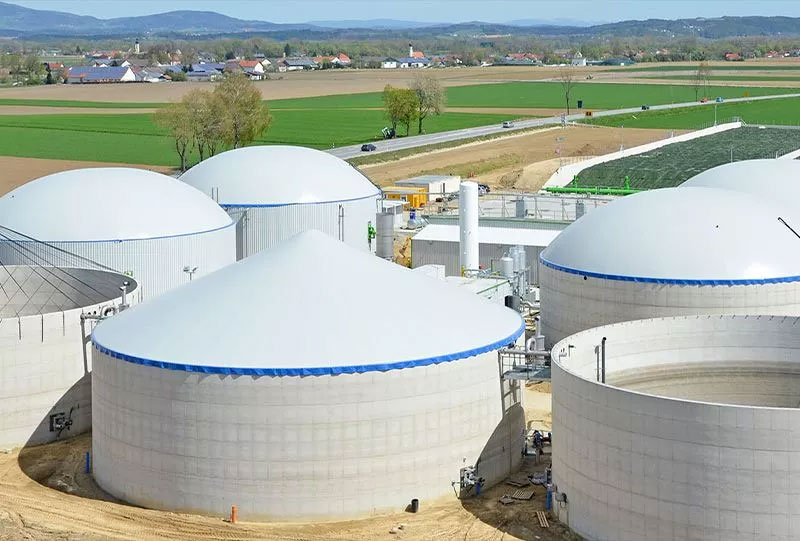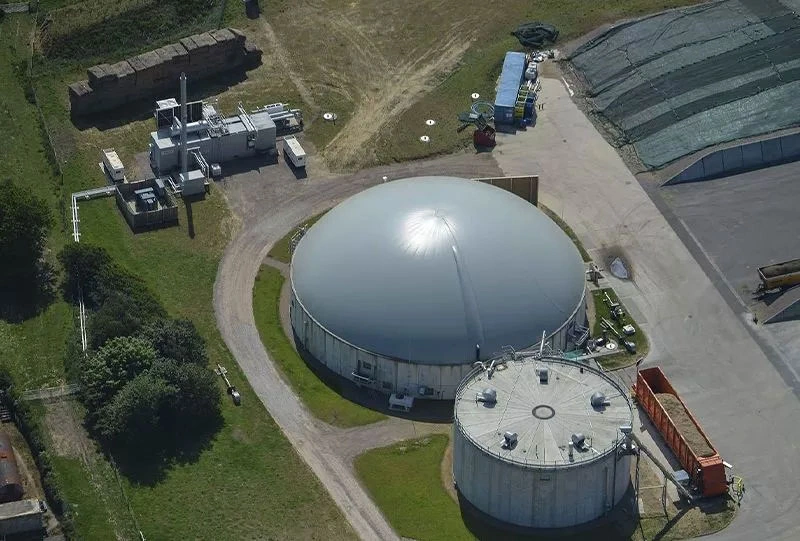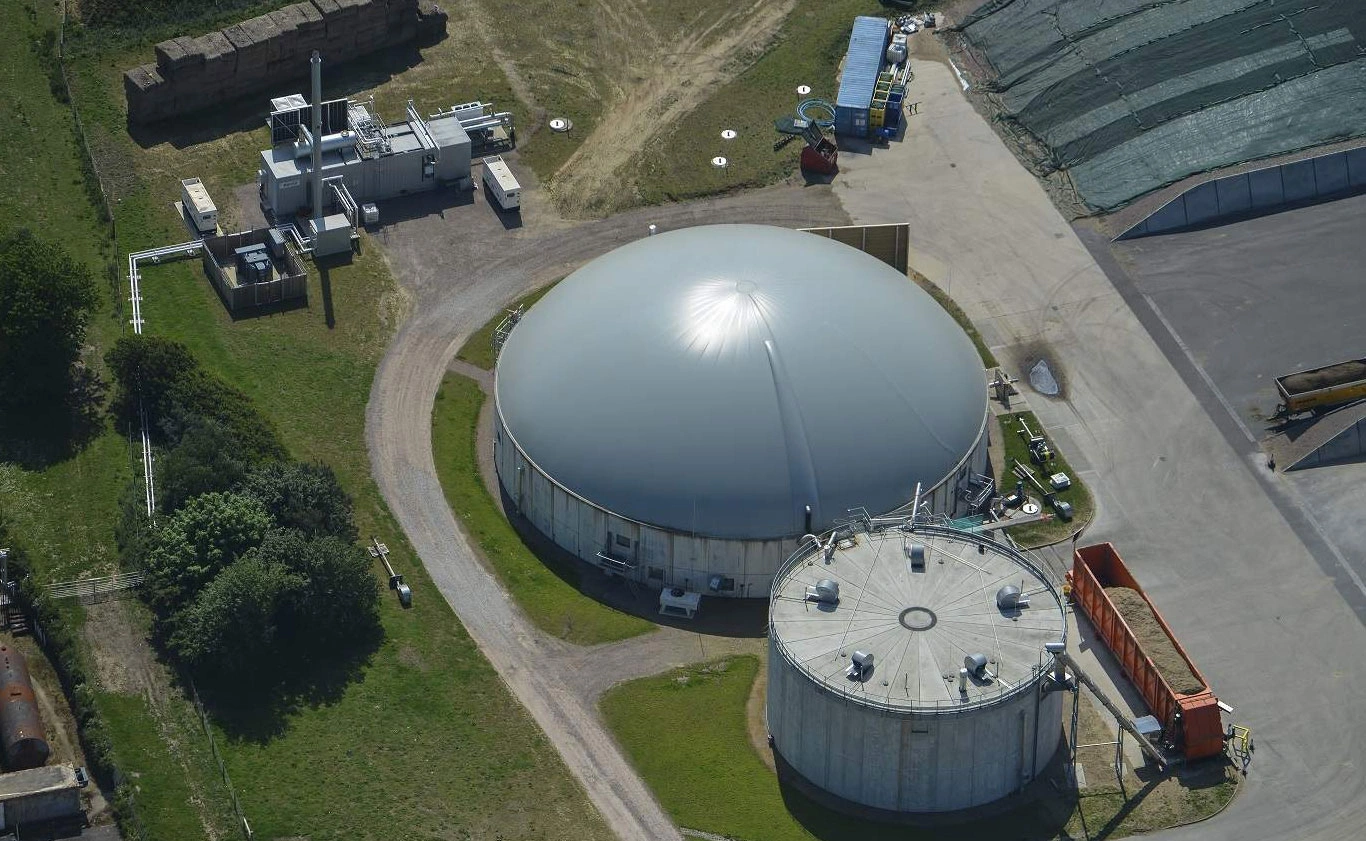
High-Quality Biogas Domes Covers & Storage Balloons – Reliable Solutions in India
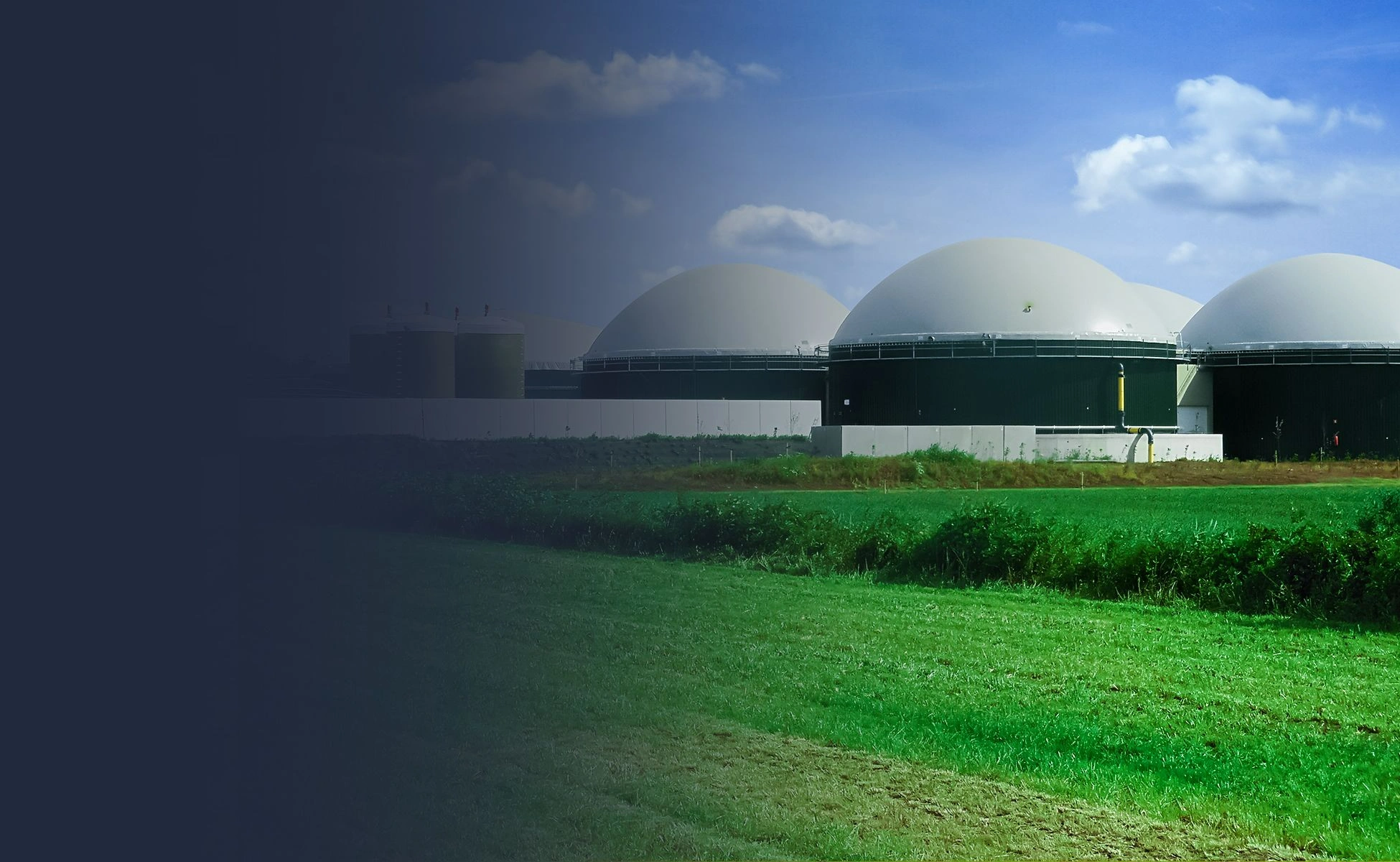 LUCKY's Biogas Cover Are Unmatched In Terms Of Quality, Flexibility and Durability.
LUCKY's Biogas Cover Are Unmatched In Terms Of Quality, Flexibility and Durability.
LUCKY's cover solution is perfect for waste-to-energy initiatives, these covers are designed to be gastight for safe for biogas handling. They are made with strong, long-lasting materials to resist tears, punctures, chemicals, and UV rays.
LUCKY-TECH Membranes Pvt Ltd has a strong heritage & expertise into specialised production & supply of ENGINEERED PVC / PVDF Coated Fabrics for biogas membranes and storage balloons.
Bio Gas Dome Covers & Liners, Gas Collection Covers, Clarifier Covers, Insulated Covers
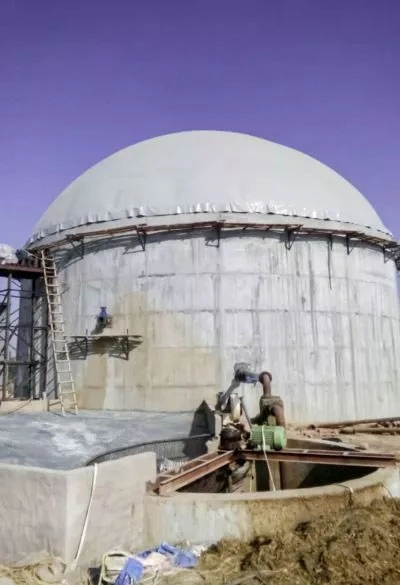 Partnered with stock listed & Belgium based SIOEN INDUSTRIES, LUCKY’s Biogas cover and liner systems are unmatched in terms of quality, flexibility and durability.
Partnered with stock listed & Belgium based SIOEN INDUSTRIES, LUCKY’s Biogas cover and liner systems are unmatched in terms of quality, flexibility and durability.
Our innovative designs span the entire range of liner and cover needs – whether you’re looking for GAS COLLECTION COVERS, CLARIFIER COVERS, INSULATED COVERS, FLOATING COVER for a pond, tank or lagoon, we have a cover or liner design for your application.
Our biogas collection covers & balloons are proven to be among the best in the industry.
Biogas Dome Plant vs. Biogas Balloon Plant – Which One is Right for You?
 The anaerobic treatment process produces biogas, a gaseous fuel consisting mostly of methane that can be converted into green, renewable energy. This valuable resource can be used to generate process heat or electricity, helping to offset energy costs.
The anaerobic treatment process produces biogas, a gaseous fuel consisting mostly of methane that can be converted into green, renewable energy. This valuable resource can be used to generate process heat or electricity, helping to offset energy costs.
In addition to the attractive cost savings, preventing methane from escaping into the atmosphere with a tank or lagoon cover helps the environment by reducing greenhouse gases.
There are high quality PVC Coated Fabrics which are specially produced for the efficient production of the Biogas. Fabrics are treated with suitable chemicals to be resistant to Fire, UV, Weather, Rot and Abrasion.
It is made from special PVC formula which provides high endurance and protection against sun rays and extreme weather conditions. These fabrics are available in ranges from 900 GSM (Grams per Square Meter) till 1300 GSM.
Special Features of Biogas Domes
Our high-quality PVC coated fabrics are treated with suitable chemicals to be resistant to Fire, UV, Weather, Rot and Abrasion. It is made from special PVC formula which provides high endurance and protection against sun rays and extreme weather conditions.
Applications
Our BioGas Domes are used for various applications:
- 1. Biogas Cover for Hotels
- 2. Biogas Cover for Hostels
- 3. Biogas Cover for Hospitals
- 4. Biogas Cover for Housing Colonies
- 5. Biogas Cover for Dairy Farms
- 6. Biogas Cover for Factory Canteens
- 7. Biogas Cover for Food Processing Industries
- 8. Biogas Cover for Fish & Vegetable Markets & so on...
Properties & More
- 1. Ideal shelter for aerobic fermentation
- 2. Hydrolytic Resistant i.e. it prevents sparking due to chemical reactions
- 3. Special Lacquering for resistance to Gases such as Methane, Water Hydrogen, Carbon Monoxide, Carbon Dioxide & also resistant to Sulphides and Ammonia
- 4. Lightweight and flexible
- 5. Flame resistant, UV resistant, High abrasion resistance
- 6. Perfect Weldability
- 7. 100% Recyclable
- 8. Ease of maintenance
- 9. Durable, Long-lasting
| FABRIC PROPERTIES | TYPE-I | TYPE-2 | TYPE-3 |
| Base Fabric | 100% Polyester | 100% Polyester | 100% Polyester |
| Yam | 1100 dtex | 1100 dtex | 1670 dtex |
| Weave | 9*9 | Panama weave | Panama weave |
| Total weight | 900 g/m2 | 1150 g/m2 | 1300 g/m2 |
| Width | 300cms | 300cms | 300cms |
| Lacquering | Fine-tuned weld able both side acrylic coated | Fine-tuned weld able both side acrylic coated | Fine-tuned weld able both side acrylic coated |
| Key Feature | Antibacterial, UV treated | Antibacterial, UV treated | Antibacterial, UV treated |
| PHYSICAL PROPERTIES | |||
| BreakingStrength | 3000/2800N/5cm | 4000/3500N/5cm | 5500/5000N/5cm |
| Tear strength | 300/300N | 550/500N | 900/800N |
| Adhesion | 90 N/5cm | 100 N/5cm | 125 N/5cm |
| Flame Retardancy | M2/B1 | M2/B1 | M2/B1 |
| OTHER PROPERTIES | |||
| Temperature Resistance | -30°C/+70°C | -30°C/+70°C | -30°C/+70°C |
| Light Fastness | 7-8 | 7-8 | 7-8 |
| Gas Permeability | 400cm3m2.bar.d | 400cm3m2.bar.d | 400cm3m2.bar.d |
The polyester woven base cloth is protected and neutralized by multiple layers of PVC, which are specially developed for biogas operations. The surface of the membrane is then sealed with a specific lacquer, therefore guaranteeing reduced methane permeability and high chemical resistance.
Why Double Membrane is Used
Double Membrane Biogas Balloon/ holders are used for biogas storage. It’s mounted tightly on the roof of the Digester and separated sphere on surface of Land. The Biogas holder system has a double membrane structure.
Outer Membrane
- It is made of PVC coated fabric and produced with special additives that are ultraviolet/ Flame retardant/ Antibacterial & weather resistant.
- The outer membrane is a permanently inflated structure. The membrane is inflated by the use of electrically operated blowers.
- The outer membrane critically controls and maintains the whole system pressure.
- Non-return valves are fitted in the air supply line to isolate each blower when in standby mode.
- A regulator valve is fitted on the outer membrane exhaust duct.
- It also Helps the Inner membrane for uninterrupted supply of generated gas.
- It also protects the inner gas membrane from environmental conditions for continues working.
- In Case of any Damage to the inner membrane the Biogas doesn’t escapes out.
Inner Membrane
- It is made of PVC coated fabric and produced with special additives that are ultraviolet / Flame retardant/Antibacterial & weather resistant.
- The inner membrane forms the variable volume gas containment within the outer membrane.
- As the volume of stored gas increases, the inner membrane rises to accommodate it.
- The pressure within the gas containment, and therefore is maintained by the air pressure within the outer membrane bearing on the surface of the inner membrane.
- The pressure differential across the outer air containment and inner gas containment is minimal.
- In the unlikely event of an outside membrane failure, the inner membrane will maintain structural integrity against all loading conditions (internal pressure and environmental).
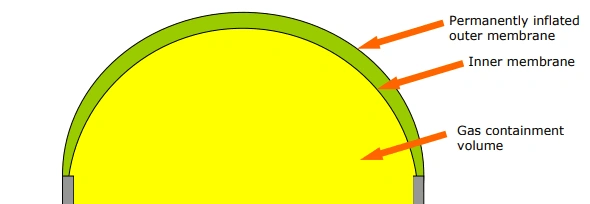
Faq's
Biogas is a by-product of the decomposition of organic matter by anaerobic bacteriBiogas is typically composed of 60% methane and 40% CO2. It is similar to natural gas which is composed of 99% methane. Biogas is clean and renewable energy that may be substituted for natural gas to cook, to produce vapor, hot water, or to generate electricity. At room pressure and temperature, biogas is in gaseous form, not liquid like LPG (propane). Bottling biogas is a very expensive process.
Biogas is a type of biofuel that is naturally produced from the decomposition of organic waste. When organic matter, such as food scraps and animal waste, break down in an anaerobic environment (an environment absent of oxygen) they release a blend of gases, primarily methane and carbon dioxide.
Organic waste is put into a sealed tank called a digester (or bioreactor) where it is heated and agitated. In the absence of oxygen anaerobic bacteria consume the organic matter to multiply and produce biogas.
Any organic waste has the ability to produce biogas: human excreta, manure, animal slurry, fruit and vegetable waste, slaughterhouse waste, meat packing waste, dairy factory waste, brewery, and distillery waste, etc.
Fiber-rich wastes like wood, leaves, etc. make poor feedstocks for digesters as they are difficult to digest.
The amount of biogas you can extract from your organic waste depends on the waste itself and the design of the digester system. Some digesters can yield 20 m3 of biogas per tonne of waste while others can yield as much as 800 m3 per tonne.
It all depends on waste quality, digester design and proper operation of the system.
Biogas is normally produced in nature by the anaerobic degradation of organic waste in soil, marshes, ocean, etc.
Biogas is also produced in landfills where organic food waste degrades in anaerobic conditions.
Biogas can be produced in anaerobic digesters. These are equipment (tanks) providing full control of the process and ensuring full biogas recovery.
Methane has a greenhouse gas (GHG) heating factor 21 times higher than CO2. Combustion of biogas converts methane into CO2 and reduces the GHG impact by over 20 times.
By extracting the methane out of waste and using it to produce heat and/or electricity we ensure that the waste will not degrade in an open environment therefore reducing direct methane atmospheric emissions. Moreover, the energy provided by the biogas is likely to displace fossil fuel which is the main contributor to GHG emissions.
Biogas energy is considered carbon-neutral since carbon emitted by its combustion comes from carbon fixed by plants (natural carbon cycle).
The amount of waste going in the digester is almost equal to the amount coming out. However, the quality of the waste is altered for the better (less odor, better fertilizer, reduced organic load, and less polluting).
Waste (solid/liquid) coming out of the digester can be separated – the solid part can be composted and the liquid part can be used as liquid fertilizer and can be treated further and disposed of.
Fabrics are treated with suitable chemicals to be resistant to fire, UV, Weather, Rot, and Abrasion. It is made from special PVC formula which provides high endurance and protection against sun rays and extreme weather conditions.
The advancements in the biogas domes in 2025 include,
- Expansion of biomethane production.
- Growth in the biogas market.
- Increased usage of biogas in transportation.
Lucky-Tech manufactures provide
- Biogas Domes covers
- Storage Balloons
- Biogas Domes Liners
- Gas Collection Covers
- Clarifier Covers
- Insulated Covers
Know More About - Bio Gas Domes
Get Your Free Quote Today!
Tell us about your project needs and we'll provide a custom quote tailored to your specific requirements.

